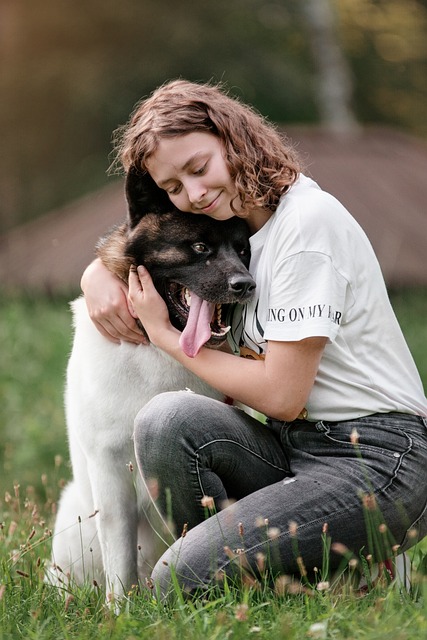Pet sitting and dog walking services have become a preferred alternative for dog owners who prioritize their pets' well-being, offering an in-home care option that provides a familiar and stress-free environment for dogs. These services ensure personalized, attentive, and secure treatment, catering to dogs that prefer the comfort of home, and help maintain their mental and physical health through regular walks and interactions. Professional pet sitters and dog walkers are integral to these services, offering more than just exercise; they manage a dog's daily needs, including behavioral checks, feeding, medication if required, and companionship, tailoring their care to each pet's unique requirements, breed-specific behaviors, and energy levels. This attentive care helps prevent issues like separation anxiety and destructive behaviors, contributing to the dogs' physical health by preventing obesity and related health risks. Business owners in this sector must navigate local regulations, ensuring compliance with laws, obtaining necessary licenses, and adhering to vaccination and insurance requirements while staying informed on animal welfare legislation. Top-tier services include clear communication with pet owners, a consistent routine, emergency preparedness, and the use of proper tools. Offering flexible scheduling and customized care options can set these businesses apart in the market. By upholding industry standards and focusing on the health and happiness of pets, these services build trust with pet owners and establish successful, community-integrated dog walking and pet sitting businesses.
pet owners with active lifestyles often seek reliable solutions for their dogs’ daily exercise needs, in-home pet care services, particularly those offering dog walking, have emerged as a tailored solution. This article delves into the advantages of in-home pet care, emphasizing comfort and wellbeing for pets. It also explores the integral role of professional dog walkers within pet sitting and dog walking frameworks, ensuring both pet health and legal compliance. Understanding local regulations and adhering to best practices are crucial aspects that will be thoroughly examined, offering a comprehensive guide for pet owners considering these services.
Maximizing Comfort: The Benefits of In-Home Pet Care for Dogs

Pet sitting and dog walking services have become integral to maintaining the well-being of dogs who prefer the comfort of their own homes. Unlike traditional kennels, in-home pet care offers a familiar environment for pets, reducing stress and anxiety associated with new surroundings. This personalized attention ensures that dogs receive consistent care in a setting where they feel secure and loved.
For pet owners who are particularly attentive to their furry companions’ needs, the benefits of in-home pet care are manifold. Regularly scheduled dog walks can prevent behavioral issues stemming from pent-up energy or boredom, as dogs engage with their environment and enjoy the stimulation of new sights and smells during a walk. Moreover, pet sitting services provide a seamless transition for pets between the company of their owners and professional caregivers, fostering a sense of continuity in their daily routines. This blend of personalized attention and professional expertise not only enhances a dog’s quality of life but also offers peace of mind to their owners, knowing their pets are receiving compassionate and consistent care right in the comfort of their own home.
Exploring the Role of Professional Dog Walkers in Pet Sitting and Dog Walking

Professional dog walkers play a pivotal role in the lives of pets whose owners work long hours or have busy schedules that prevent them from providing the necessary exercise and attention their dogs require. In the realm of pet sitting and dog walking, these individuals are more than just caretakers; they are integral to maintaining a dog’s health, happiness, and overall well-being. Their services go beyond mere walks in the park; they include behavioral monitoring, feeding, administering medications if needed, and providing companionship, which is crucial for dogs left alone during the day. This consistent engagement helps mitigate issues such as separation anxiety and destructive behaviors that can arise when dogs are left unattended for extended periods. Furthermore, professional dog walkers often offer flexible scheduling to accommodate various client needs, ensuring that each dog’s exercise routine is tailored to their individual energy levels and breed-specific requirements. By facilitating regular physical activity, these professionals help support a dog’s physical health, which in turn can prevent obesity and related health issues. The role of professional dog walkers within the pet sitting and dog walking industry is not only about providing a service but also about fostering a strong bond between the pet and their human companions, ensuring that both parties benefit from the care and attention offered by these dedicated professionals.
Understanding Local Regulations and Best Practices for Dog Walking Services

When providing in-home pet care services, particularly for dog walking, it’s imperative to be well-versed in local regulations to ensure both legal compliance and the safety of the pets under your care. Each municipality may have distinct laws regarding leash laws, licenses for professional walkers, and areas where dogs can be walked without restrictions. These rules are not only crucial for the orderly conduct of dog walking businesses but also for fostering a harmonious relationship between pet owners and the community at large.
To navigate these regulations successfully, start by researching your local government’s website or contacting them directly. Obtain all necessary permits and ensure you adhere to vaccination requirements, insurance policies, and any specific ordinances that apply to dog walkers. Additionally, staying informed about updates in animal welfare laws is vital. Beyond legalities, embracing best practices for dog walking services enhances the quality of care provided. This includes understanding each dog’s temperament, having a clear communication channel with pet owners, and being prepared for emergencies. Establishing a consistent routine, using appropriate tools like waste bags and a reliable leash, and maintaining a calm and confident demeanor can significantly contribute to the well-being of the pets you serve. Moreover, offering flexible scheduling and personalized pet sitting options as part of your dog walking services can set you apart in the market. Always prioritize the health, safety, and happiness of the dogs you walk, aligning with industry standards set by professional organizations dedicated to pet care and animal welfare. By combining a thorough understanding of local regulations with adherence to these best practices, your dog walking business will operate smoothly and earn the trust of pet owners in your community.
pet sitting and dog walking services have become integral to the well-being of many dogs, offering tailored in-home care that maximizes comfort. By exploring the nuances of this industry, from the benefits of in-home care to the role of professional dog walkers, it’s clear that these services are more than a convenience—they’re a vital component of pet health and happiness. Adhering to local regulations and best practices ensures safety and quality, making pet sitting and dog walking not just a trend but a thoughtful choice for pet owners. As the demand for these services continues to rise, it’s essential for providers to stay informed and committed to excellence in care.
